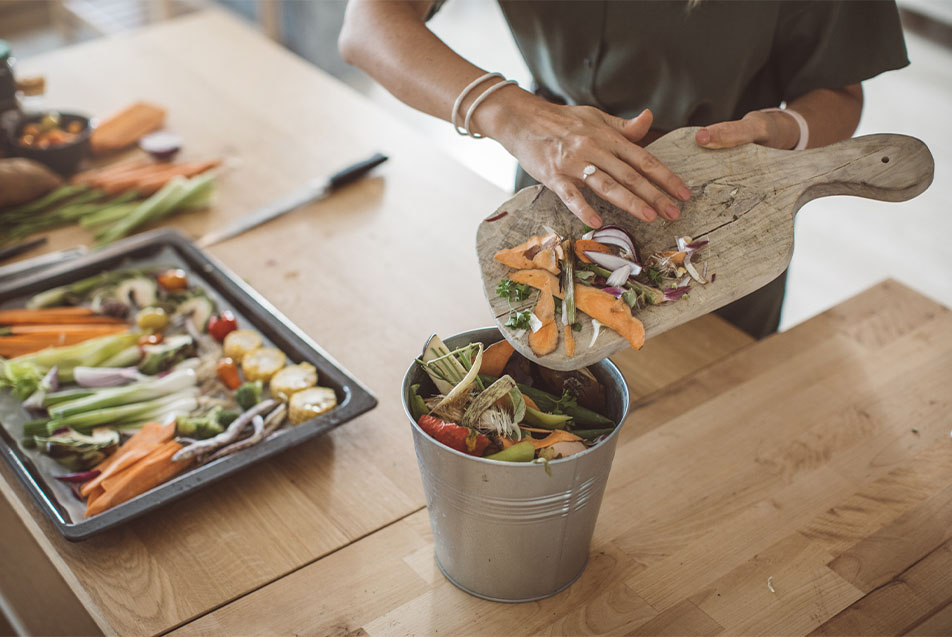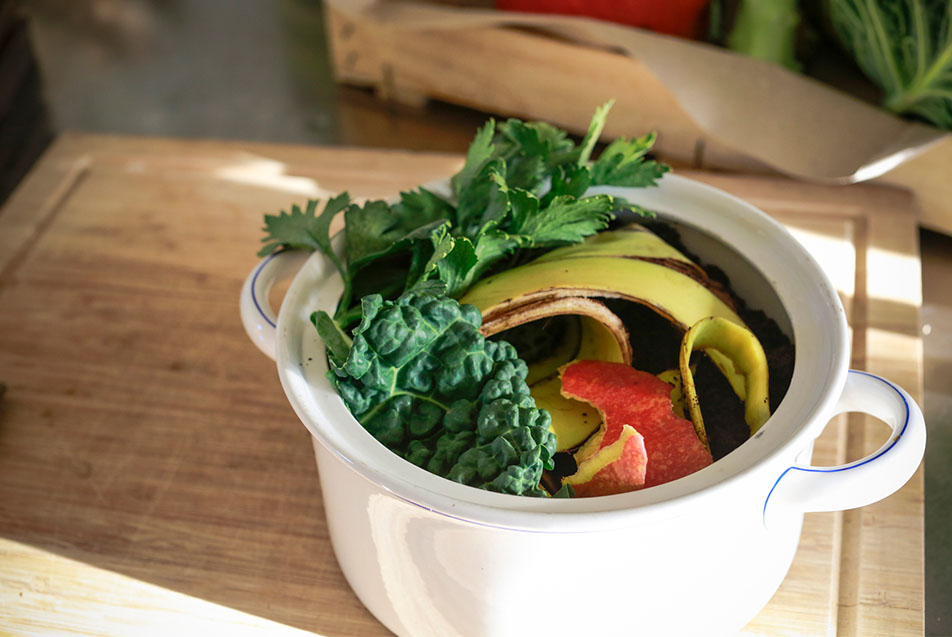
Composting presents many agricultural and environmental benefits, but it can be challenging to know where to begin. For help, we turned to Camille Schuelke, a greenhouse farmer at the Parkview Community Greenhouse, and Megan Masterson, the founder of Ground Down, to share their best tips and tricks for kickstarting your composting endeavors.
What is composting?
Composting is a process that uses microbes to turn organic matter, such as plant materials and food scraps, into a soil-like substance that is put back into the garden. This soil-like substance, or compost, provides nutrients for our plants to grow but, most importantly, provides food for the microbes that live in the soil.
Why is composting important?
Composting is highly beneficial for several reasons, including the following:
- It keeps scraps from going into the landfill, where they can give off methane gas.
- Composting raises the pH levels of your soil, benefiting your soil’s health. The typical pH most plants desire is 6.2-6.5, with some flowers up to 6.8. Composting usually averages a pH of 7.0, so adding organic sulfur pellets or Canadian peat moss may be necessary to help lower the pH into desirable ranges. Whichever you choose, be sure to follow the instructions on the label.
- It also provides microbes a place to break down nutrients in the soil so plants can uptake them.
- Compost encourages beneficial microbes that move throughout the soil in a way that allows the soil to retain more water.
- The soil microbes will help eliminate, or outperform, any plant diseases and harmful microbes that live in the soil.
Are there different composting methods?
Yes, there are different structures or ways you could compost. For example, you could opt for a simple pile in your backyard or choose bins and compost tumblers. No matter what medium or structure you choose, the process is still the same.
A general process or outline for composting must include the following:
- Sticking to a 3:1 ratio of browns to greens is best when utilizing approved materials.
- Measure the internal temperature of your compost mile using a composting thermometer. Once your compost pile reaches anywhere from 110-150 degrees Fahrenheit, you need to turn the mound with a shovel, pitchfork or a tool of your choosing. This should happen every 3-10 days.
- Reaching these temperatures will assist in killing any diseases, weeds or other seeds that might remain in your pile.
- When and if your compost pile gets dry, simply add water.
- Don’t forget! It’s important to keep turning the pile so oxygen gets incorporated for the microbes.
How does someone get started with composting?
First, you must decide how much work you want to put into your composting practices as you get started. Once you know, there are a few ways to begin your composting adventure, including:
- For an easy, quick start option, try working with a local composting company to divert your organic waste from the landfill.
- To start your pile, decide if you want to turn it with a pitchfork, a barrel or let it sit and layer, but know that that process will take longer.
- Try purchasing a composting unit from your local hardware store or create your own. You can easily make one out of upcycled pallets.
- Then, you can start to separate your food scraps from your regular trash routine. These food scraps will be your green material.
- Next, you need to start collecting leaves and wood chips or work with a local company to find a way to get a good base of brown materials.
- After that, you can start your pile! You will want to begin a 3:1 mix of brown to green materials.
- If you ever feel like this is too much work, you can try a different layering method, letting the material sit or contact a local composting company.
- Remember, be patient and know that you’re not alone. There are millions of tiny microbes that have your back.
What kinds of materials are compostable, and which are not?
According to the United States Environmental Protection Agency (EPA), many excellent materials are perfect for composting, including:
- Greens (wet)
- Fruits and vegetables
- Houseplants
- Grass and yard clippings
- Coffee grounds
- Teabags
- Browns (dry)
- Eggshells
- Coffee filters
- Nutshells
- Shredded newspaper
- Cardboard
- Paper
- Hay and straw
- Dry leaves
- Sawdust and wood chips
- Cotton and wool Rags
- Hair and fur
- Pine needles
In contrast, the EPA warns that the following materials are not suitable for composting and why:
- Black walnut tree leaves or twigs because they release substances harmful to plants.
- Coal or charcoal ash because they contain substances harmful to plants.
- Dairy products (butter, milk, sour cream, yogurt and eggs) can create odor problems and attract rodents and flies.
- Fats, grease, lard or oils can create odor problems and attract pests, too.
- Diseased or insect-ridden plants because the diseases or insects might survive and transfer back to other plant life.
- Meat, fish bones and/or scraps because they also create odor problems and attract pests.
- Pet wastes like dog and cat feces or soiled cat litter might contain parasites, bacteria, germs, pathogens and viruses harmful to humans.
- Yard trimmings treated with chemical pesticides because they might kill beneficial composting organisms.
If you’re unsure of what to do with dairy products, fats and oils, meat or fish bones and pet wastes, please check with your local composting or recycling coordinator to see if your community curbside or drop-off composting program accept these organics.
Is there a way to avoid unpleasant odors when composting?
The best way to avoid unpleasant odors and pests is to utilize the approved list of materials for composting. Be sure the compost rises to the correct temperature and turn it as needed.
If you are doing all that and still notice an odor, make sure you have enough brown material in your pile, then turn it to get more oxygen to the microbes. Foul smells usually occur when there is a lack of oxygen and proper carbon balance.
How long does it take to compost, from start to finish?
Composting from start to finish can take anywhere from one month to an entire year. You know your composting pile is ready when:
- You can’t make out materials put into the pile.
- It looks like soil.
- It smells earthy.
- The pile is a lot smaller than when you started (1/4 of the size).
- The pile reaches air temperature.
What should you do with the finished product?
Once your pile is ready, you can choose to do several things with it, including:
- Feed the microbes in your garden or pots by spreading a light dusting over the top and mixing it in.
- Make your soil lighter by adding 2-3” of compost to your garden, then mix it in.
- Create compost tea by placing a small amount of compost in a bag and soaking it in water for a day. You can then use it to water your house, plants, or garden.
More information
Please visit the Community Greenhouse and Learning Kitchen events page to learn more about the available classes and tours.




